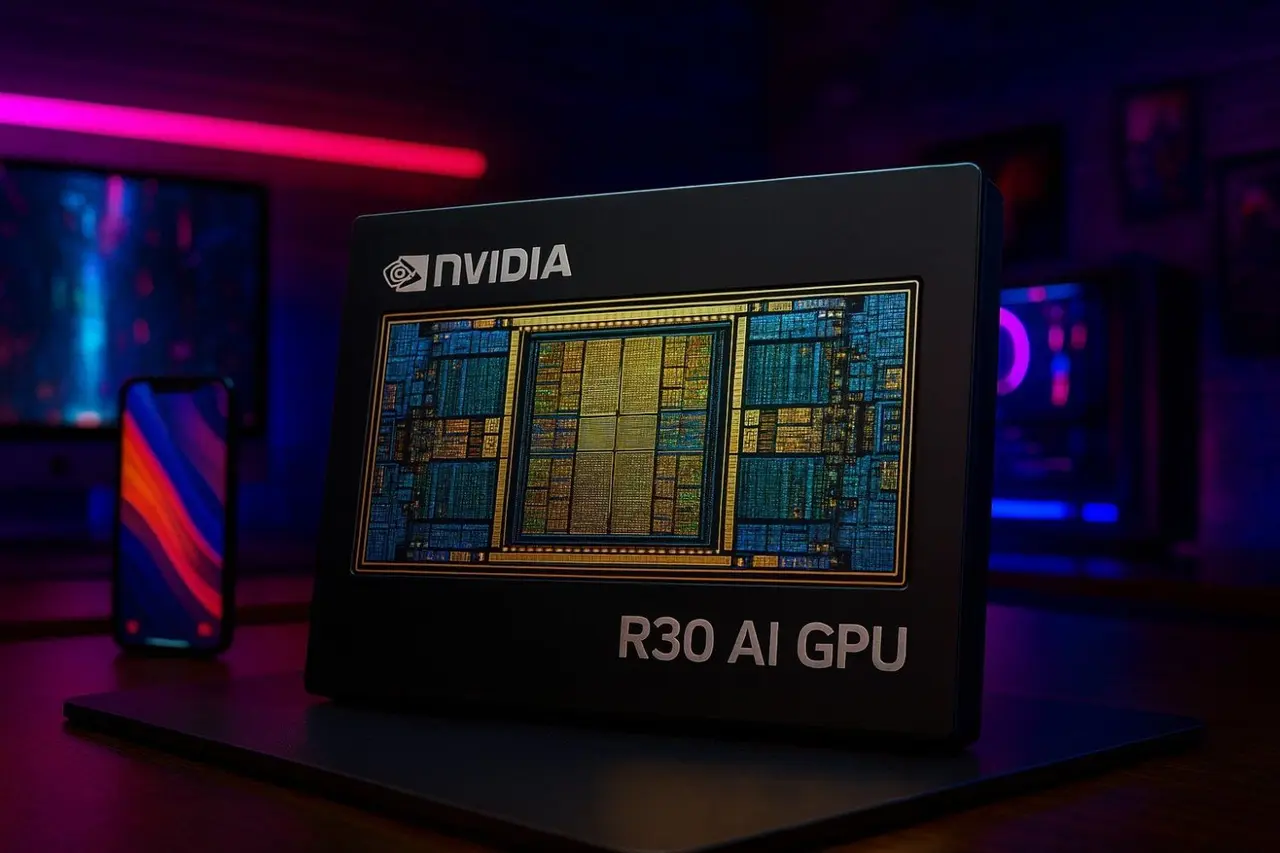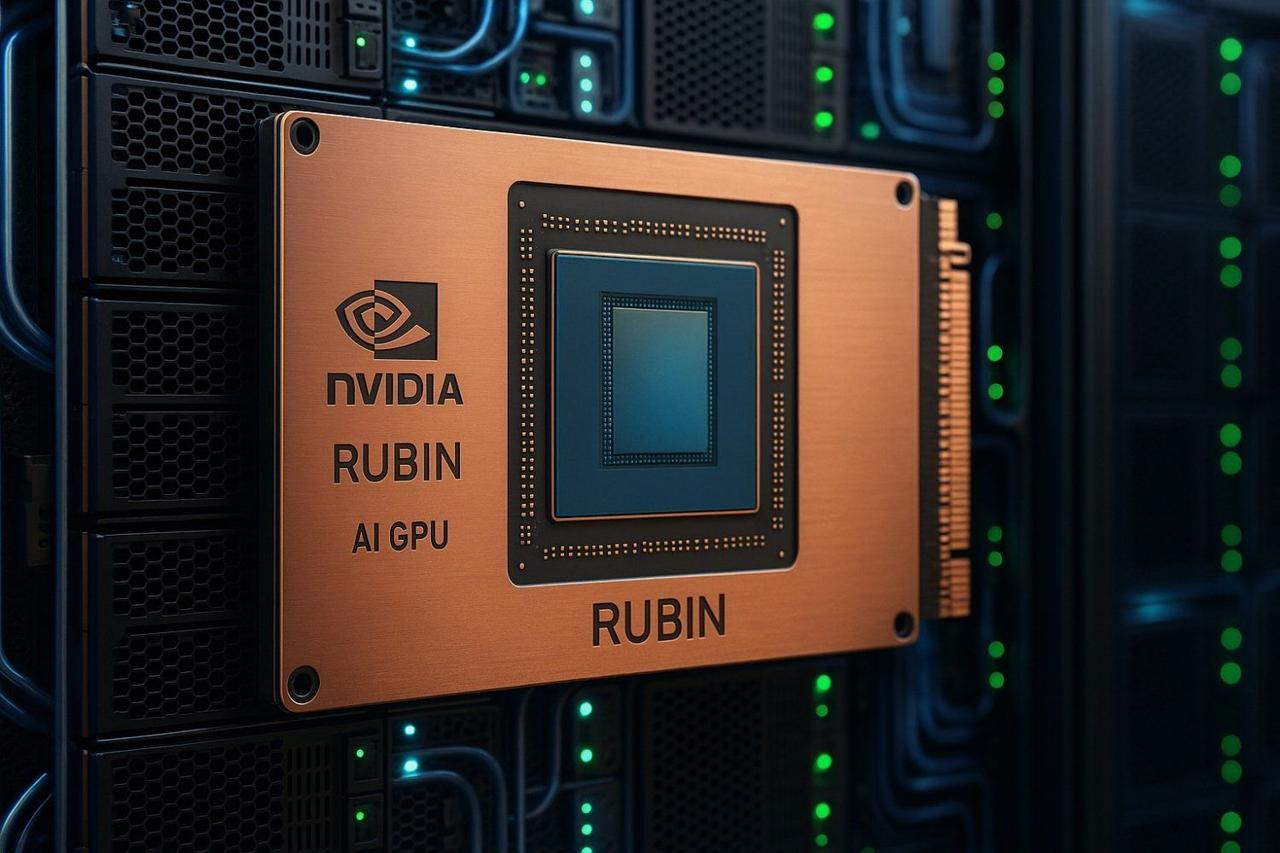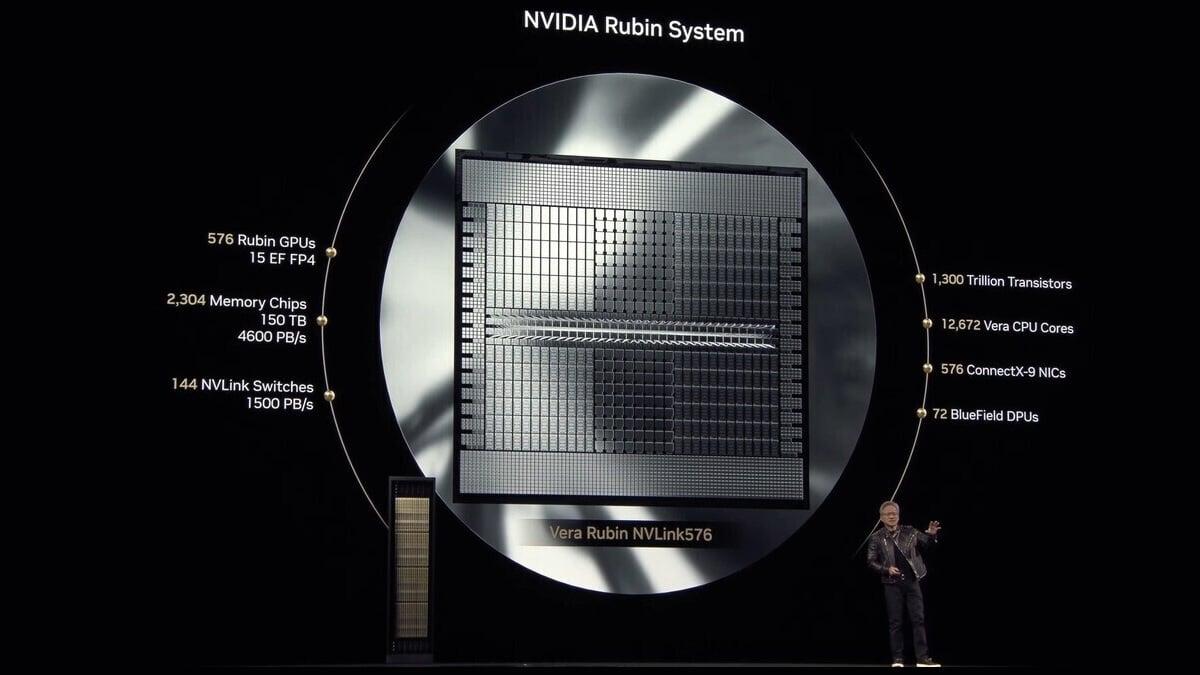NVIDIA Confirms Next-Gen Rubin AI GPUs On Track, Debunking Delay Rumors
3 Sources
3 Sources
[1]
NVIDIA's next-gen Rubin AI GPUs not delayed, no changes to fight AMD Instinct MI450 AI chips
TL;DR: NVIDIA confirms its next-gen Rubin AI GPU architecture remains on schedule, debunking rumors of delays or power redesigns to compete with AMD's Instinct MI450. Rubin GPUs will feature advanced HBM4 memory and deliver up to 1800W per chip, with 5.7 million units expected to ship in 2026. NVIDIA's next-gen Rubin AI GPU architecture hasn't been delayed, after rumors flew in the last few hours that Rubin was being delayed to better fight AMD's next-gen Instinct MI450 AI accelerators. But in a response from an NVIDIA spokesperson who said recent reports of Rubin being delayed are "incorrect" and that "Rubin is on track". This is after reports surfaced claiming NVIDIA has delayed Rubin, redesigning the chip from 1800W power to 2000W of power to better compete with AMD's next-gen Instinct MI450 AI accelerator. The earlier report has been debunked, with official comment from NVIDIA reaffirming Rubin is on track, which last we heard there will be 5.7 million Rubin AI GPUs shipped in 2026, each with next-generation HBM4 memory and up to 1800W of power per R100 AI chip. The original report said: "we think that it is very likely that Rubin is delayed. The first Rubin was already taped out in late June, but NVIDIA is now redesigning the chip to better match AMD's upcoming MI450. Also, we think the Rubin chip will likely hit 2000W per chip, compared to 1800W when it was announced earlier". "We think the next tape out schedule will be in late September or October, and based on the tape out schedule, the Rubin volume will be limited in 2026. AMD and Broadcom will be the fastest growing CoWoS customers for TSMC. AMD will use CoWoS for both CPU and GPU in 2026. Broadcom will benefit from multiple projects' production schedule. However, the OpenAI Titan chip may be a swing factor as we currently haven't seen this chip being taped out, but we see the upside for both AMD and Broadcom".
[2]
NVIDIA's Rubin AI Architecture Is Reportedly Delayed, as the Firm Has Been Influenced by AMD and Is Now Redesigning to Compete with the Instinct MI450 Lineup
NVIDIA's next-gen Rubin lineup might be delayed by at least a few months, as Team Green is redesigning the lineup to give AMD a tougher competition. The next-gen AI hardware segment is expected to see many changes in terms of the shift in market share from NVIDIA to AMD. Both firms are battling fiercely to bring superior equipment out there; however, NVIDIA seems to see the competition ramping up unexpectedly, which is why the firm is looking for a Rubin redesign. Based on a report by the Fubon Research, which is part of one of the largest banks in Taiwan, it is claimed that Rubin will have limited volume in 2026, marking a delay of approximately four to six months. While the specifics of a redesign are uncertain for now, NVIDIA's decision is reportedly based on AMD's Instinct MI450 AI lineup. The latter is claimed to debut with IF64 and IF128 configurations, competing with Vera Rubin. More importantly, AMD is claimed to go heavy on HBM capacity, reportedly featuring up to 432 GB per GPU. Hence, NVIDIA might target newer Rubin configurations, but this is just an estimate for now. Moreover, AMD relies on design modularity through the use of Infinity Fabric over Ethernet, which allows for easier rack deployment. It is claimed that the Rubin redesign will limit the shipment volume of the next-gen architecture in 2026, similar to what is happening now with Blackwell Ultra. Eventually, that timeline would be right in time for MI450 to debut in the market, which means Rubin Ultra might get pushed ahead as well. While the reason for Rubin's delay isn't specific, our estimate does indicate that NVIDIA's vigorous product cycle might have caused issues for the firm, and we have discussed this aspect in depth here.
[3]
[Update] NVIDIA's Rubin AI Architecture Is On Track As Team Green Sticks To Its Annual Cadence, Tackling AMD's Instinct Series With A Generational Lead
[Update - 8/14/25] - NVIDIA's Rubin architecture and respective GPUs remain on track as part of the company's annual cadence. [Original Post / Debunked] NVIDIA's next-gen Rubin lineup might be delayed by at least a few months, as Team Green is redesigning the lineup to give AMD a tougher competition. The next-gen AI hardware segment is expected to see many changes in terms of the shift in market share from NVIDIA to AMD. Both firms are battling fiercely to bring superior equipment out there; however, NVIDIA seems to see the competition ramping up unexpectedly, which is why the firm is looking for a Rubin redesign. Based on a report by the Fubon Research, which is part of one of the largest banks in Taiwan, it is claimed that Rubin will have limited volume in 2026, marking a delay of approximately four to six months. While the specifics of a redesign are uncertain for now, NVIDIA's decision is reportedly based on AMD's Instinct MI450 AI lineup. The latter is claimed to debut with IF64 and IF128 configurations, competing with Vera Rubin. More importantly, AMD is claimed to go heavy on HBM capacity, reportedly featuring up to 432 GB per GPU. Hence, NVIDIA might target newer Rubin configurations, but this is just an estimate for now. Moreover, AMD relies on design modularity through the use of Infinity Fabric over Ethernet, which allows for easier rack deployment. It is claimed that the Rubin redesign will limit the shipment volume of the next-gen architecture in 2026, similar to what is happening now with Blackwell Ultra. Eventually, that timeline would be right in time for MI450 to debut in the market, which means Rubin Ultra might get pushed ahead as well. While the reason for Rubin's delay isn't specific, our estimate does indicate that NVIDIA's vigorous product cycle might have caused issues for the firm, and we have discussed this aspect in depth here.
Share
Share
Copy Link
NVIDIA has officially confirmed that its next-generation Rubin AI GPU architecture is on schedule, refuting recent rumors of delays or redesigns aimed at competing with AMD's upcoming Instinct MI450 AI accelerators.
NVIDIA Refutes Rubin AI GPU Delay Rumors
NVIDIA has officially confirmed that its next-generation Rubin AI GPU architecture is on schedule, dispelling recent rumors of delays or redesigns. The company's spokesperson stated that reports claiming Rubin was being delayed are "incorrect" and that "Rubin is on track"
1
. This announcement comes in response to speculation that NVIDIA was redesigning the chip to better compete with AMD's upcoming Instinct MI450 AI accelerators.Rubin AI GPU Specifications and Production Plans

Source: TweakTown
The Rubin AI GPUs are set to feature advanced HBM4 memory and deliver up to 1800W of power per chip
1
. NVIDIA plans to ship approximately 5.7 million Rubin AI GPUs in 2026, indicating a significant production scale for these next-generation AI accelerators1
. These specifications highlight NVIDIA's commitment to maintaining its leadership position in the AI hardware market.Market Competition and Rumors
Recent reports had suggested that NVIDIA was delaying the Rubin architecture to redesign it from 1800W to 2000W power consumption, allegedly to better compete with AMD's next-gen Instinct MI450 AI accelerator
2
. However, NVIDIA's official statement has debunked these claims, reaffirming the company's confidence in its current design and timeline.AMD's Upcoming Instinct MI450 Series
While NVIDIA maintains its course, AMD is reportedly preparing to launch its Instinct MI450 AI lineup. Rumors suggest that AMD's offering will debut with IF64 and IF128 configurations and may feature up to 432 GB of HBM capacity per GPU
3
. AMD's approach reportedly relies on design modularity through the use of Infinity Fabric over Ethernet, potentially offering advantages in rack deployment3
.
Source: Wccftech
Related Stories
Industry Implications
The AI hardware market is poised for significant developments, with both NVIDIA and AMD vying for market share. NVIDIA's confirmation of Rubin's timeline suggests the company is confident in its ability to maintain its competitive edge without major last-minute changes. As the industry anticipates the release of these next-generation AI accelerators, the focus remains on performance, power efficiency, and scalability in data center deployments.
Future Outlook
As both companies continue to innovate, the AI hardware landscape is expected to evolve rapidly. NVIDIA's Rubin architecture and AMD's Instinct MI450 series will likely shape the future of AI computing, driving advancements in machine learning, data analytics, and other AI-intensive applications. The competition between these tech giants promises to accelerate the pace of AI technology development, potentially leading to more powerful and efficient AI systems in the coming years.
References
Summarized by
Navi
[1]
Related Stories
NVIDIA Accelerates Next-Gen 'Rubin' AI GPU Launch, Featuring Advanced 3nm Process and HBM4 Technology
04 Dec 2024•Technology

NVIDIA Accelerates AI Chip Development: Rubin GPUs and Vera CPUs Set for Early Debut
10 Jun 2025•Technology

NVIDIA's Rubin Platform: Next-Gen AI Architecture Set for 2026 Launch
23 Aug 2025•Technology

Recent Highlights
1
Google launches Gemini 3 Flash as default AI model, delivering speed with Pro-grade reasoning
Technology

2
OpenAI launches GPT Image 1.5 as AI image generator war with Google intensifies
Technology

3
OpenAI launches ChatGPT app store, opening doors for third-party developers to build AI-powered apps
Technology





